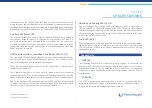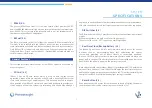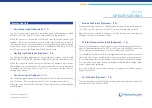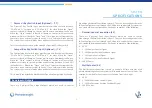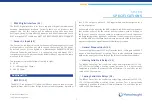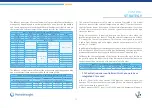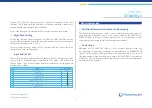
4
SYSTEM
SPECIFICATIONS
DC Power Jack (J2) & Power Terminal (J3) (3.1)
LCD (4.1)
Buttons (4.2)
LEDs
Page Button
Zone 24V Power LEDs (4.3.1)
Scroll Button
The iNVent 2 control panel is powered by an external 60W switched mode
power supply that converts 240V AC to 24V DC. This 24V DC supply is
distributed throughout the panel via resettable fuses to each of the 4 Zones,
as well as to the other auxiliary 24V feeds. The 24V DC is also stepped down
to 3.3V which is used to power all the control circuitry on the PCB. This means
that the 24V feed to a connected product can be shorted without affecting
the operation of the panel or the rest of the connected devices.
The External SMPS has a current limit of 2.5A, but in actual use, this needs to
be de-rated to 2A in order to accommodate surge currents when the unit is
powered on.
iNVent 2 uses an LCD, buttons and LEDs to communicate its operation to the
user.
The DC power Jack (J2) is used to connect power to the panel from the
external power supply, and is centre positive.
The Power Terminal (J3) is for future use when the power supply will be
integrated within a new design case
The 20 x 4 Character LCD is the primary method of displaying information
about the iNVent 2 panel. It provides information on all the configuration
settings, as well as the current status of the control panel. By default, it shows a
splash screen with the model, date/time and system status. Through the use of
buttons, the screen can be navigated through a number of pages of information.
The Page button changes the screen between the global information and
cycles through the 4 zones.
Each zone has a green LED to the left of the Damper/Louvre Terminal which
indicates the status of the 24V power available for that zone. If the LED is
iNVent 2 uses a number of LEDs to display status information to the user.
The Scroll button scrolls the information shown for the global or zone page
displayed. A long press of this button will change the status information
between values and voltages (i.e. % <-> V).
Power
User Interface





